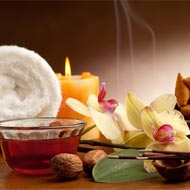- Bergamot Essential Oil
- Black Pepper Essential Oil
- Cajeput Essential Oil
- Camomile Oil
- Cedarwood Essential Oil
- Citronella Essential Oil
- Clary Sage Essential Oil
- Coriander Oil
- Lavender Essential Oil
- Rose Oil
- Eucalyptus Oil
- Fennel Essential Oil
- Frankincense Essential Oil
- Geranium Oil
- Grapefruit Oil
- Essential Oil Jasmine
- Juniper Berry Oil
- Lavandin Oil
- Lavender Oil
- Lemon Oil
- Lemongrass Oil
- Mandarin Oil
- Melissa Oil (Officinalis)
- Cypress Oil
- Aroma Essential Oil
- Aromatherapy And Essential Oils
- Avocado Oil Benefits
- Oil Healing Properties
- Essential Lemon Oil Health Benefits
- Lemongrass Essential Oil Health Benefits
- Mandarin Essential Oil Health Benefits
- Marjoram Essential Oil Health Benefits
- Massage Body Oils Health Benefits
- Melissa Essential Oil Benefits
- Essential Myrrh Oil Health Benefits
- Natural Essential Oil Health Benefits And Uses
- Neroli Essential Oil
- Niaouli Essential Oil
- Essential Oils And Uses
- Organic Essential Oils
- Patchouli Essential Oil
- Peppermint Essential Oil
- Petitgrain Essential Oil
- Rosemary Essential Oil
- Sandalwood Essential Oil
- Sandalwood Massage Oil
- Sunflower (Black) Seed Oil
- Tangerine Oil
- Tea Tree Oil Uses
- Thyme Essential Oil
- Vetiver Oil
- All Natural Oil
- Olive Oil Products
- Almond Oil For Hair,Massage,Cooking And Aromatherapy
- Best Olive Oil In The World - Reviews
- Avocado Oil
- Aromatherapy Essential Oils And Blends
- Essential Oils Aromatherapy
- Catnip Essential Oil
- Spikenard Essential Oil
- Chocolate Essential Oil
- Carrot Seed Essential Oil
- Tuberose Essential oil
- Manuka Essential Oil
- Yarrow Essential Oil
- Galbanum Essential Oil
- Linden Blossom Essential Oil
- Oregano Essential Oil
- Ravensara Essential oil
- Wintergreen Oil
- Helichrysum Oil
- Clove Oil
- Spearmint Essential Oil
- Pine Essential Oil
- Lime Essential Oil
- Lemon Verbena Essential Oil
- How Different Are Mint Oil And Peppermint Oil?
- Vegetable Oils
Ylang Ylang Essential Oil
Origin
The ylang ylang tree is a local tree to the Philippines as also Indonesia, and its flowers are highly valued for its perfume.
It prefers temperate climates and apart from its native regions, it is also grown in Melanesia, Polynesia, Comoros Islands and Micronesia.
The tree grows to about 40 feet in height, and it has flowers that grow in a hanging inflorescence. The flowers are very valuable because of their use in aromatherapy.
Ylang ylang essential oil has been used both for massage as well as for aroma therapy for generations, and in this article, we discuss both its benefits and negatives.
Physical properties
Ylang ylang oil is a watery, pale yellow liquid that has a very exotic floral fragrance. It has a very strong smell, and very often, it can give a headache if too much is used.
How to extract
Listed below are the steps on to how to make ylang ylang oil:
- Ylang ylang oil is extracted by the process of steam distillation, where hot steam is passed through the flowers to break down its cells and release its essential oils.
- These essential oils are carried with the steam and condensed where they form an immiscible liquid.
- An immiscible liquid is a mixture of two or more liquids that do not mix completely and can therefore be separated by a process of fractional distillation.
- The water remaining after the separation of the essential oil is reused.
Chemical composition
Ylang ylang oil has a number of chemical constituents. The main ones are listed below.
- Methyl salicylate
- Linalyl acetate
- Caryophyllene
- Eugenol
- Cresol
- Linalol
- Cadinene
- Geraniol
- Methyl benzoates
Therapeutic applications
Ylang Ylang oil has been used for centuries in its native countries as an aphrodisiac. In Indonesia, ylang ylang flowers were strewed over the beds of newlyweds. In the Philippines, garlands made of ylang ylang flowers were often used in religious ceremonies; this is because ylang ylang was known to have a very relaxing effect on the body. Additional uses include the following:
- It is a known antidepressant and sedative and also has hypotensive properties.
Combined with its relaxing properties, it also has the capacity to lift the spirits and balance hormones. - It was commonly used as a tonic for the womb and was used after childbirth to give both mother and child a feeling of closeness and togetherness.
- It is commonly used in the perfume industry.
Other benefits include use in the following conditions:
- Hyperpnoea (rapid breathing)
- Tachycardia (rapid heartbeat)
- Hypertension (high blood pressure)
- Impotence and frigidity
Due to its very strong aroma, ylang ylang essential oil was usually used only in aroma therapy. Dilute concentrations can, however, be used in combination with other oils as ylang ylang massage oil. Studies and research prove that the oil is euphoric, anti-depressive and has sensual properties. Studies have also showed that ylang ylang oil increased alpha wave activity in the brain.
Blends well with
Ylang ylang oil is blended with a number of other essential oils. It is used in the perfume industry as well as for aroma therapy, but usually never individually because of its strong smell. Some of the essential oils with which ylang ylang oil blends well with are rosewood oil, sandalwood oil, lavender oil, jasmine oil, bergamot oil, rose oil, orange oil, Melissa oil, patchouli oil, neroli oil, grapefruit oil, and citronella oil.
Precautions
Ylang ylang oil is not known to have any adverse side effects. In fact, its very strong smell ensures that it is used in tiny quantities as the floral aroma can very quickly give a headache if used in excess. Ylang ylang oil is not used widely in the West and only now, are its properties becoming known. Studies are only now being conducted into the benefits of ylang ylang oil.
 Find Pose
Find Pose

